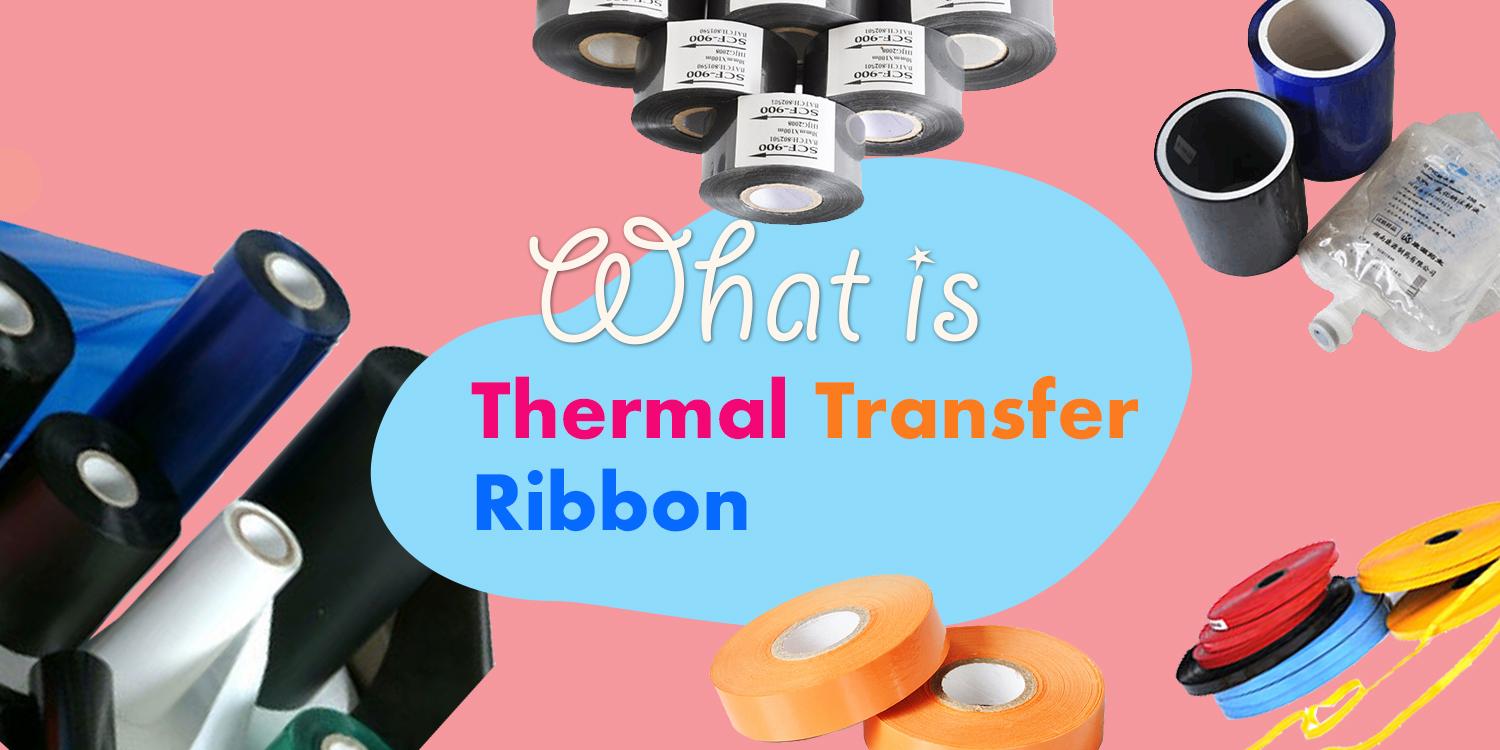
Terminology for Thermal Transfer Ribbon
Thermal Transfer Ribbon
Thermal transfer printing is the most efficient digital printing method. Thermal transfer printers use a thermal transfer ribbon that contains wax-based ink. Heat is applied to the ribbon through a thermal printhead, which melts the ink and transfers it to the paper (or other medium).
What is thermal transfer ribbon? A thermal transfer ribbon normally consists of three layers. The thermal transfer ribbon is just a roll of polyester film coated on one side with ink or a colored pigment. The coating of the ribbon can be formulated using either wax, wax/resin (was mixed with resin) or resin only. When the thermal transfer ribbon passes over the thermal print head, the heat produced by the printer head causes the ink or colored pigment to transfer off the carrier film and bond to the label. The printhead should be cleaned every time when you replace a new ribbon. The easy way to clean it is to use cotton swab and isopropyl alcohol.
Wolfbarco carries wax ribbon, wax/resin ribbon, resin ribbon, as well as hot stamp foil and near edge TTO (Thermal Transfer Overprinter). https://www.wolfbarco.com/products/thermal-transfer-ribbon
Wax Ribbon
A thermal transfer ribbon that is coated with a wax based ink formulation. Wax ribbons can be manufactured with a hot melt process or a solvent-based process. Wax ribbons are best for coated and uncoated paper stocks. Wax ribbons will print at higher speeds and lower temperatures than midrange or resin ribbons. https://www.wolfbarco.com/products/thermal-transfer-ribbon/wax
Wax-Resin Ribbon
The ink component of thermal transfer ribbon (barcode ribbon) is formulated with a mixture of wax and resin. Resins provide the ribbon with excellent mechanical properties, but do not limit the printing speed or receptor compatibility. Wax-resin ribbons produce a finer image when paired with smooth paper or coated paper labels. Wax-resin is much more durable than wax, but should still avoid contact with water. https://www.wolfbarco.com/products/thermal-transfer-ribbon/wax-resin
Resin Ribbon
A thermal transfer ribbon that is manufactured with a pure resin coating. Resin ribbons create the most durable image and they withstand heat and most chemicals. They must image at slower speeds and higher temperatures. Resin ribbons have the highest degree of scratch, smudge and abrasion resistance. The best print results are on synthetic stocks. https://www.wolfbarco.com/products/thermal-transfer-ribbon/resin
Midrange Ribbon
A thermal transfer ribbon that is coated with a combination of wax and resin ink formulations. Midrange ribbons offer more durable print than wax ribbons. They offer superior scratch and abrasion resistance when compared to wax ribbons, but less than that of a full resin ribbon. Midrange ribbons print on paper and synthetic labels.
CSI / CSO
CSI stands stands for coated side in, CSI refers the ink is coated on the inside of the ribbon. CSO stands for coated side out, CSO indicates the ink is coated on the outside of the ribbon. Thermal transfer label ribbons are either coated side in (CSI) or coated side out (CSO). Printers like Fargo/Datamax and Sato use CSI ribbons. But printers such as Zebra, Intermec and RJS use CSO ribbons.
Type of Cores
Core
The cardboard or plastic cylinder upon which thermal transfer ribbons are mounted. 1 inch core is most popular size. But smaller printers use 1/2 inch core since smaller printers have limited space.
Notched Core
Some printers require notches so that the ribbon will fit properly and snap into place.
Take Up Core
Some ribbons are packaged with an extra core to be used to rewind a thermal transfer ribbon after it has been used.
Leader Tape
Uncoated film found at the beginning of a roll of ribbon. It is used for product identification and it protects the ribbon from being damaged. Most leaders are colored.
Trailer Tape
Uncoated portion of ribbon found at the end of a thermal transfer ribbon. The trailer sends a signal to the printer that the ribbon is out. Some printers use a silver trailer that uses reflectivity as a sensor. Others use a clear tape, or no tape to the core.
Abrasion Resistance
It is the degree to the label surface resists abrasion, i.e. wearing or scraping.
Back Coating
Coating that provides heat protection, lubrication and static resistance to lengthen printhead life. The back coating comes in direct contact with the printhead. back coating has three functions: to protect foil from burning through, to diminish electrostatic charging and to improve foil slippage. Good back coating is slightly rough so that residue from the printing process does not settle on the foil.